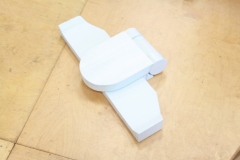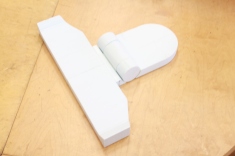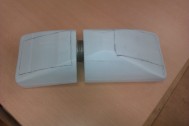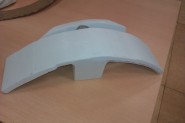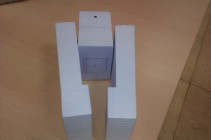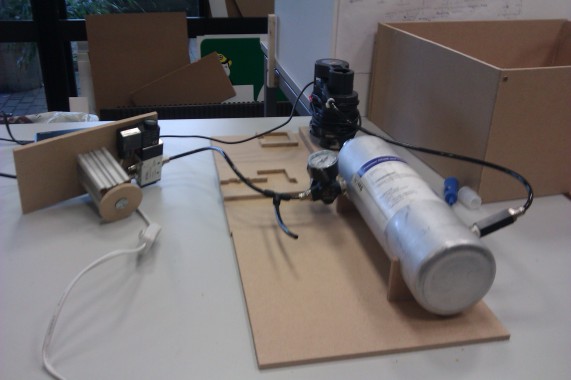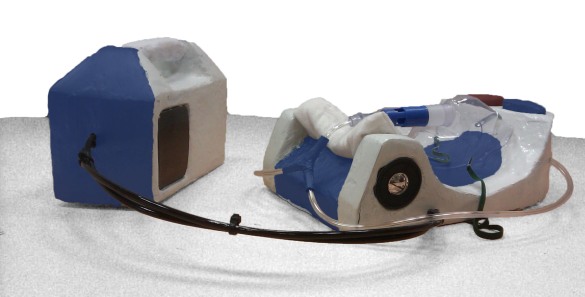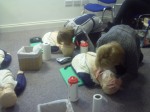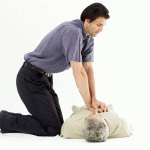After our protoype presentation on coming back after the christmas I was happy with the feedback I received and knew that I was now on the right track. But, I knew that I had to design a backboard to strap the compression system to. I wanted to avoid this as this would add extra problems to overcome in weight and getting the casualty onto it. I also, had to redesign the headrest so that it could work with the backrest. So now I had to build new prototypes. I came up with a folding method so that it would take up less space as this back rest was going to be big.
So when this new backboard was added I then needed to figure out a way to add the compression system to the backboard which took sometime and a few models to go through. I came up with an idea where if i had the compression system going vertical along the body that there would be 2 seperate pieces and a flexible connection so if the casualty was heavy set then it would overcome their big stomach and still lie on top of the patient. A couple of examples below..
But then I started thinking that there was no reason that the compression device couldn’t lie down horizontally, and this was just much easier as there was no stomach getting in the way of the device, it would lie across the chest where all the areas I’m aiming to work on are placed. Compressions can still be made and AED pads can still be easily reached. And with this I went with a foldable design and by using belt straps they can be attached to the back rest..

